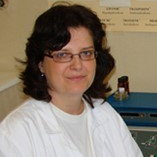Gaseous Transmitters and Cardiovascular System
A special issue of Biomolecules (ISSN 2218-273X).
Deadline for manuscript submissions: closed (31 August 2022) | Viewed by 15163
Special Issue Editors
Interests: physiology and patophysiology of cardiovascular system aimed on function of endothelium, smooth muscle cells and nerve regulation; investigation of signal pathways enagaged to the etiopathology of hypertension and metabolic syndrome, nitric oxide and hydrogen sulfide predominantly; evaluation of the activity of conduit and resistance arteries using functional methods in vivo and in vitro in animal experimental models as well as in samples of patients
Interests: perivascular adipose tissue; protease-activated receptor 2; metabolic syndrome; vascular endothelium; cardiovascular function
Special Issues, Collections and Topics in MDPI journals
Special Issue Information
Dear Colleagues,
In the last two decades, a large body of experimental evidence has demonstrated that gaseous transmitters, which have signaled the end of the traditional concept of intercellular signalization, might play a crucial role in cardiovascular system regulation. Unlike classical messengers, they are not readily stored in vesicular structures, are re-synthesized as needed, and affect cellular metabolism in a more immediate fashion. Hydrogen sulfide (H2S) and carbon monoxide (CO), next to nitric oxide (NO), are the most recently studied endogenous gaseous mediators, and their role in the regulation of cardiovascular system physiology and pathophysiology has been emphasized.
This Special Issue is focused on the role of NO, H2S, and CO in the regulation of the cardiovascular system under both normal and pathological conditions. All three gaseous messengers synchronize complicated processes, such as blood pressure regulation, vessel tone modulation, neurotransmission, angiogenesis, and endothelial and heart function. Moreover, a possible crosstalk among NO, H2S, and CO produced endogenously or released from chemical donors, as well as their potential therapeutic applications, has attracted great attention from many fields of biomedicine. This Special Issue welcomes original research articles and reviews on all aspects of the molecular mechanisms and functional action of gaseous transmitters as well as those on the effectiveness of their donors in experimental or clinical studies.
Dr. Sona Cacanyiova
Dr. Satomi Kagota
Dr. Andrea Berenyiova
Guest Editors
Manuscript Submission Information
Manuscripts should be submitted online at www.mdpi.com by registering and logging in to this website. Once you are registered, click here to go to the submission form. Manuscripts can be submitted until the deadline. All submissions that pass pre-check are peer-reviewed. Accepted papers will be published continuously in the journal (as soon as accepted) and will be listed together on the special issue website. Research articles, review articles as well as short communications are invited. For planned papers, a title and short abstract (about 100 words) can be sent to the Editorial Office for announcement on this website.
Submitted manuscripts should not have been published previously, nor be under consideration for publication elsewhere (except conference proceedings papers). All manuscripts are thoroughly refereed through a single-blind peer-review process. A guide for authors and other relevant information for submission of manuscripts is available on the Instructions for Authors page. Biomolecules is an international peer-reviewed open access monthly journal published by MDPI.
Please visit the Instructions for Authors page before submitting a manuscript. The Article Processing Charge (APC) for publication in this open access journal is 2700 CHF (Swiss Francs). Submitted papers should be well formatted and use good English. Authors may use MDPI's English editing service prior to publication or during author revisions.
Keywords
- Gaseous transmitters
- Nitric oxide
- Hydrogen sulfide
- Carbon monoxide
- Cardiovascular system







